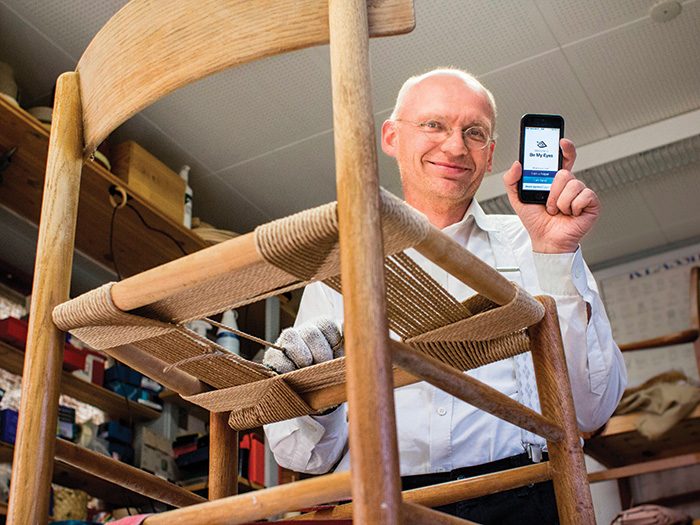
Help for the blind
Technology Aged 25, Danish craftsman Hans Jørgen Wiberg (pictured) was diagnosed with Usher syndrome, a disorder that causes hearing loss and visual impairment. Now 52, he is helping the blind to ‘see’ thanks to a clever idea.
While volunteering at a facility for blind and visually impaired people, Wiberg began to notice people using Apple’s FaceTime video facility on their iPhones to get help from friends or family when they were stumped by everyday tasks, such as checking the sell-by date of a carton of milk.
“I thought, ‘What if they could ask strangers for help?’” says the Dane. The result was a smartphone app called Be My Eyes that allows users to contact a volunteer on video and to get help whenever needed. There are currently 450,000 volunteers registered with the app, helping more than 30,000 blind and sight-impaired people.
“It’s a way to become more independent,” says satisfied user Anne Hansen, 50, a Copenhagen psychotherapist. “When I’m cooking, for example, I just call someone to say, ‘How does this look? Does it look done or does it need more time?”
Ending street-name sexism
Society When it comes to being remembered by a street name, women get a bad deal. Researchers have analyzed the gender balance of streets named after people in seven major global cities, including London and Paris, and found that only 27.5 per cent were named after women.
In Spain, it’s even worse: just five per cent of the nation’s streets are named after women, and they are mainly religious figures and saints. But since a change in municipal politics following the 2015 election, cities such as Bilbao, Oviedo and Cadiz now plan to rename streets that commemorate figures from the fascist Franco regime, instead calling them after leading Spanish female figures, including civil rights activists, scientists and novelists.
French road goes solar
Energy France has opened the world’s first solar panel road. The 1km stretch in the Normandy village of Tourouvre-au-Perche cost €5m and it is hoped the 2,000 motorists using it each day will produce enough power to light the street lamps for the local population of 3,400. Ecology minister Ségolène Royal has said she would like to see solar panels installed on 1,000km of French roads.
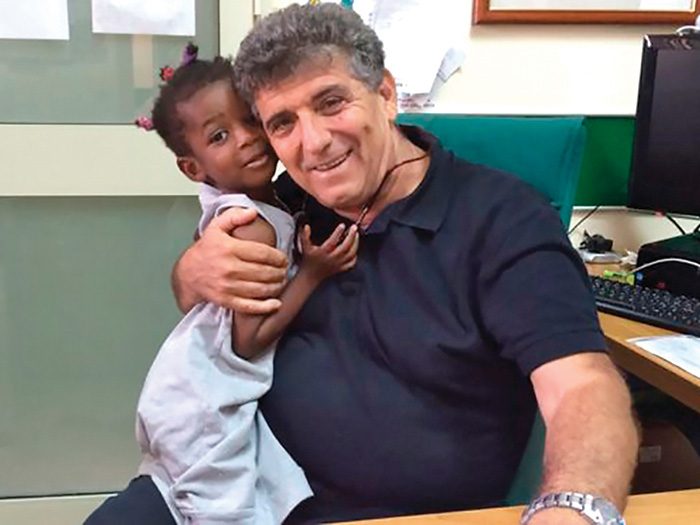
Heroes
Island’s doctor to the migrants Last summer, a picture of a 60-year-old Italian doctor and a nine-month-old Nigerian girl went viral on the internet. The doctor was Pietro Bartolo, director of the small hospital on the island of Lampedusa, south of Sicily.
The baby’s mother had died when their overcrowded migrant boat capsized in the Mediterranean. For Bartolo, this was sadly nothing new. In 20 years at the hospital he has seen more than a quarter of a million migrants pass through.
“All I know is that I’m a doctor, trying to do the right thing,” he says. “I do my best to heal their physical wounds, but one of my worries is not having the means to heal the psychological wounds.”
Sources: Technology: Good News Network, 26.11.2016. Society: City Lab.com, 23.11.2016. Energy: The Guardian, 22.12.2016. Heroes: BBC News, 29.10.2016
Kidney stones are tiny bits of minerals and other materials that clump together in the kidney. But usually they only cause symptoms when they get stuck in the ureter on their way to the bladder. There, as they partly or completely block urine’s flow, they cause pain that can be beyond excruciating.
Who gets kidney stones?
- One out of ten of us will get one
- Half of those who have a first bout will suffer another
- About 20 percent endure repeat episodes
What predisposes people to kidney stones?
- Not drinking enough fluids
- A diet rich in red meat
- Obesity
- Gout
- Family history of kidney stones
How are kidney stones treated?
- Most need no treatment other than for pain; the stones will pass on their own;
- If a stone completely blocks the flow of urine, surgery is required, but it’s usually minimally invasive.
If you’ve suffered through passing one kidney stone and want to avoid developing another, what can you do to lower your risk?
- Maintain a healthy weight.
- Eat more plant-based foods—vegetarians are at much lower risk than meat-eaters.
- Stay away from processed foods—the high salt content causes you to excrete more calcium (a common component of kidney stones) in your urine.
- Cut down on sugar, which has also been implicated in promoting stone development.
- Drink plenty of fluids—at least 2-1/2 liters per day, Water, coffee, tea, and unsweetened citrus juices are all good choices.
- Talk to your doctor might about other dietary recommendations, which will vary depending on the composition of your kidney stone.
- If you’ve done all of the above and still suffer bouts of kidney stone distress, your doctor might recommend medications to reduce repeat episodes. Depending on the composition of the stones, these might include potassium citrate, certain diuretics, and certain gout medications.
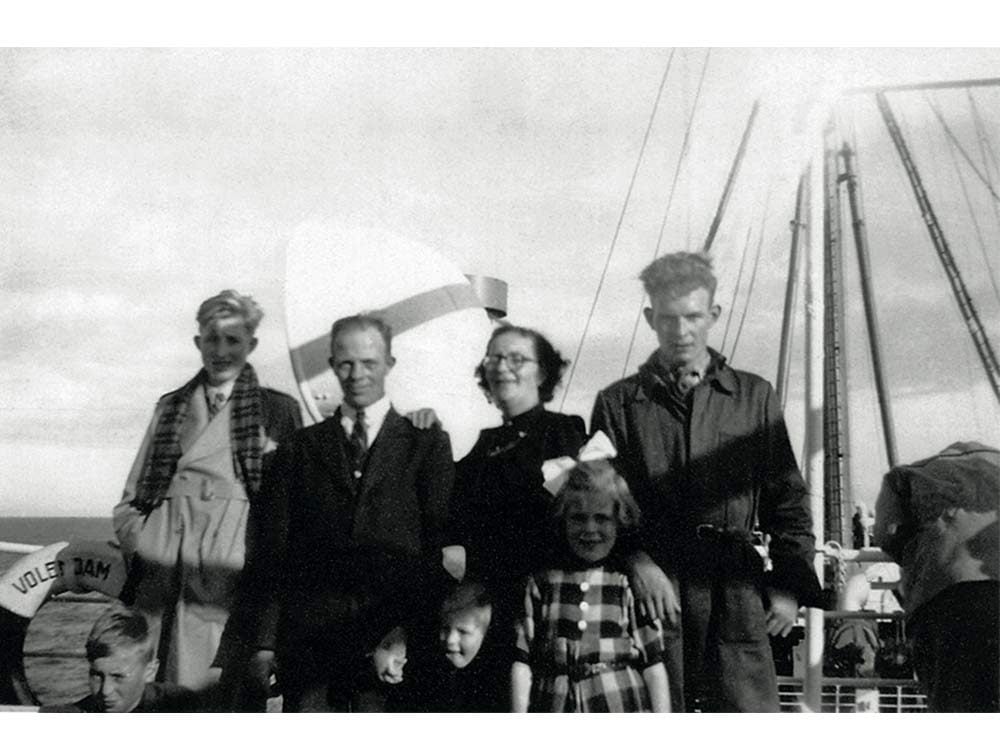
Freedom and Opportunity
This past October marked 65 years since I first arrived in Canada from the Netherlands, as a toddler, accompanied by my parents, sister and three older brothers.
After the Second World War left much of the Netherlands in poverty and devastation, several families from our village immigrated to Canada, sending back letters with glowing reports of freedom and opportunity. My brothers Nick and Hessel, aged 18 and 16, were excited to join them.
My parents, not wanting to break up the family, decided that if the boys were going, we were all going. Applications were made and accepted, and we were all set to go in the spring of 1951. My dad had work lined up for the summer with our sponsor, a farmer, for $75 a month and a free house. Everything came to a screeching halt, however, when my sister and I came down with chicken pox. We booked passage on the next available boat, the Volendam, to sail on October 2, 1951. All our worldly possessions, except what would fit into the kist (shipping crate), were sold and off we went.
I don‘t remember the ocean voyage, but my dad said the old boat shook like a rickety farm wagon on a rut-filled country lane. We docked in Quebec City, where Dad learned his first English words—“butter“ and “cheese“—after buying some welcome fresh food for the family. It was late the next day when a dirty, sooty train let us off in Belleville, Ont., and we were met by my parents‘ friends, who brought us to their farm near Picton, Ont.
My brothers got jobs picking apples, but Dad had to find work, since our October arrival meant our sponsor no longer needed him on the farm. He soon found a job shovelling coal into bags for 60 cents an hour, and he learned more English through show and tell.
After our crate arrived in early November, we moved into a small 1 1⁄2-storey house at the top of a steep hill. The dump truck bringing our belongings got stuck in the snow, so we had an early initiation to Canadian living. Our house had no electricity or indoor plumbing, but we could cut firewood for free. The next day, relatives with five children showed up on our doorstep and shared our tiny house for several weeks. In those days, the baker made deliveries and Mom surprised him one day by buying all 14 loaves of bread he had left in his truck!
Over time, Nick spread his wings and moved to Toronto, and Hessel learned farming, which eventually led to the acquisition of our own family farm. My brother Bill, my sister Rennie and I all grew up and followed our chosen career paths.
For our family, Canada was indeed the “land of opportunity,“ and our parents never regretted their decision to come here. Now, my husband and I have three grown children and four grandchildren. Fittingly, it was an honour to welcome our daughter-in-law as a new Canadian last fall, when she became a citizen on October 12, the anniversary of our arrival in this beautiful country.

Why Are Easter Bunnies So Popular Anyway?
Who isn’t familiar with the origins of Bugs, Thumper, or Peter Cottontail? These famous bunnies are beloved characters from classic childhood cartoons, movies, and literature. But did you ever wonder how the most famous bunny of all, the Easter Bunny, became synonymous with a holiday commemorating the resurrection of Jesus?
While there isn’t any historical documentation that explains how a rabbit became the “furry” face of Easter, the most obvious connection may be the calendar. April showers not only brings spring flowers, but the birth of baby rabbits. Both springtime and bunnies are iconic symbols of birth and renewal. “Rabbits (originally hares) are longstanding fertility symbols associated with the arrival of spring, because they are so prolific and give birth as soon as the weather warms,” notes Diane Shane Fruchtman, PhD, Assistant Professor of Religion, Rutgers University, New Brunswick, New Jersey.
But according to Fruchtman, there’s no religious significance to a bunny being part of the Easter holiday. “The holiday of Easter is a celebration of the resurrection of Jesus who, according to the Gospels of Mark, Matthew, and Luke, celebrated the Jewish Passover holiday on a Thursday (the last supper was a Passover Seder, celebrating the Israelites’ exodus from Egypt), was crucified on a Friday, and rose from the dead on a Sunday, on the third day after his crucifixion.”
In fact, the Easter Egg has more historical context than the Easter Bunny in that eggs may have been part of the Passover Seder plate at the last supper, as it still is today. “We don’t know for sure, but later Jewish sources firmly incorporate the egg in the Passover ritual,” Dr. Fruchtman says, “though there are no bunnies to be found.”
The earliest reference to the Easter Bunny dates back to some time before the 17th century, when the Germanic people of Europe introduced the Osterhase—a rabbit, who brought gifts to children at Easter time. As History.com explains: When these Germanic immigrants settled in America in the 1700s they brought this tradition with them to Pennsylvania. The tradition even included children leaving carrots out for the Osterhase, much like leaving cookies for Santa at Christmas.
But there is another popular theory of where the Easter Bunny came from—the myth of Ostara. According to theconversation.com, the eighth-century scholar known as the Venerable Bede, in his work The Reckoning of Time, said that the word “Easter” stems from “Eostre” (another version of the name “Ostara”).
Fruchtman elaborates on this theory: “The seventh/eighth century English monk Bede says that the word comes from an Anglo-Saxon goddess, Eostre, whose feast-day in the spring coincided with the day of the Christian Paschal celebration. But no other source mentions Eostre, and it’s entirely possible that Bede made her up. But Bede makes no mention of rabbits or eggs being associated with her.”
Although the true origins of the Easter Bunny may never be fully known or agreed upon, the Easter Bunny and its sidekick, the Easter egg, continue to be much loved traditions of the Easter holiday. “Even if your typical Easter sermon won’t include anything about rabbits, eggs, or fertility, that’s not to say that the Easter Bunny and Easter eggs are not religious traditions,” says Fruchtman. “Religion is about far more than doctrine, texts, belief, and sacred buildings; it’s about practices, community, memory, family, home, and traditions that have meaning to you.”
It’ll be hard to find someone who will argue that finding a chocolate bunny in your Easter basket doesn’t put a spring (or hop) in your step whether you believe in the Easter Bunny or not.
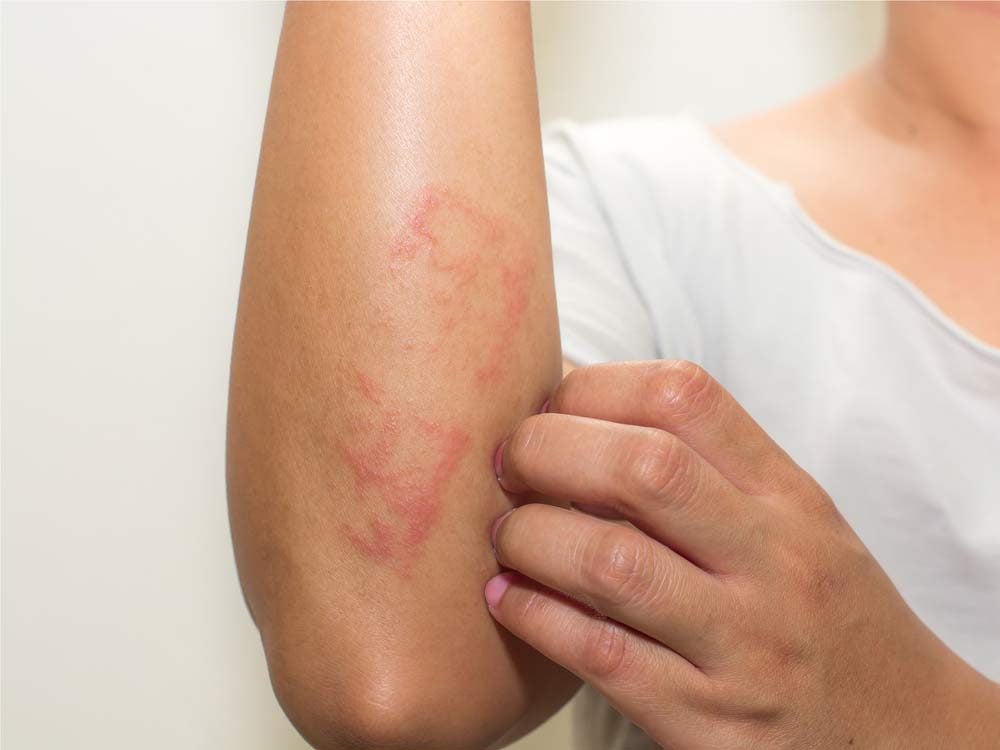
How to Deal with Psoriatic Arthritis
Close to one million Canadians have psoriasis, an autoimmune skin disorder. Perhaps 20 per cent of them will also develop an inflammatory form of arthritis, for reasons that aren’t fully understood. “We know it’s a combination of environmental and genetic factors,” says Dr. Lihi Eder, a staff rheumatologist at Women’s College Research Institute in Toronto. Typical triggers of psoriatic arthritis include obesity and stress on the joints.
Researchers have also found links between psoriatic arthritis and later cardiovascular disease, partly because the chronic inflammation causes changes in blood vessel walls. That’s why it’s critical that people with psoriasis seek a diagnosis if they notice joint pain, swelling and prolonged morning stiffness, says Eder. “If sufferers aren’t treated early enough, there’s more damage and disability, and even an increase in mortality.”
Medications (including cutting-edge biologics) can help control joint inflammation. Eder says that becoming physically active, losing weight and eating better can mitigate future risk of heart disease and increase the chances that a patient will respond well to drug treatment.

12 Things to Say (and 2 Things You Shouldn’t Say) When Someone is Sick
When our loved ones are sick, we are desperate to find ways to comfort them. But often our fumbling attempts at solace fall flat. Here are a few do’s and don’ts to help you help the sick people in your life.
DON’T ask what you can do to help. Patients don’t want the burden put on them to come up with something you can do. Just do something. The dullest tasks can be the most helpful: cook dinner, clean out the refrigerator, replace the light bulbs, change the oil in their car, take their kids to school, or ask what you can pick up at the grocery store.
DO say, “Do you want me to come over while you wait for test results?”
DO say, “I’m bringing dinner Thursday. Do you want lasagna or chicken?”
DO say, “I have Monday free if you need me to run some errands or take you somewhere.”
DON’T say, “You look great.” Very sick people are aware that their hair is falling out, their skin is covered with sores, or they’ve become skeletal. Mentioning the appearance of a sick person at all just reminds them of how they look.
DO say, “Can I take your kids for a play date? My kids are bored.”
DO say, “Don’t write me back.” All patients get overwhelmed with the burden of keeping everyone informed and feeling appreciated. If you write someone a thoughtful email, say that you don’t expect a reply. If you take the dog for a walk, insist the patient not write a thank you note.
DO say, “I don’t know what to say, but I care about you.”
DO say, “I need to go now.” Most sick people cannot handle long visits. Don’t overstay your welcome. Try visiting for 20 minutes, even less if the patient is tired or in pain. And while you’re there, wash a few dishes, clean the room, and take out the trash when you leave.
DO say, “Would you like to hear some gossip?” A change of topic goes a long way. Patients are often sick of talking about their illness. Even someone recovering from surgery has an opinion about the senator’s indiscretion, the underdog in the playoffs, or the big election around the corner.
DO say, “Do you just need to vent? I’m all ears!”
DO say, “I really admire how you are handling this. I know it’s difficult.”
DO say, “You are amazing.”
DO say, “I love you.” When all else fails, simple, direct emotion is the most powerful gift you can give a loved one going through pain. It doesn’t need to be fancified. It just needs to be sincere.
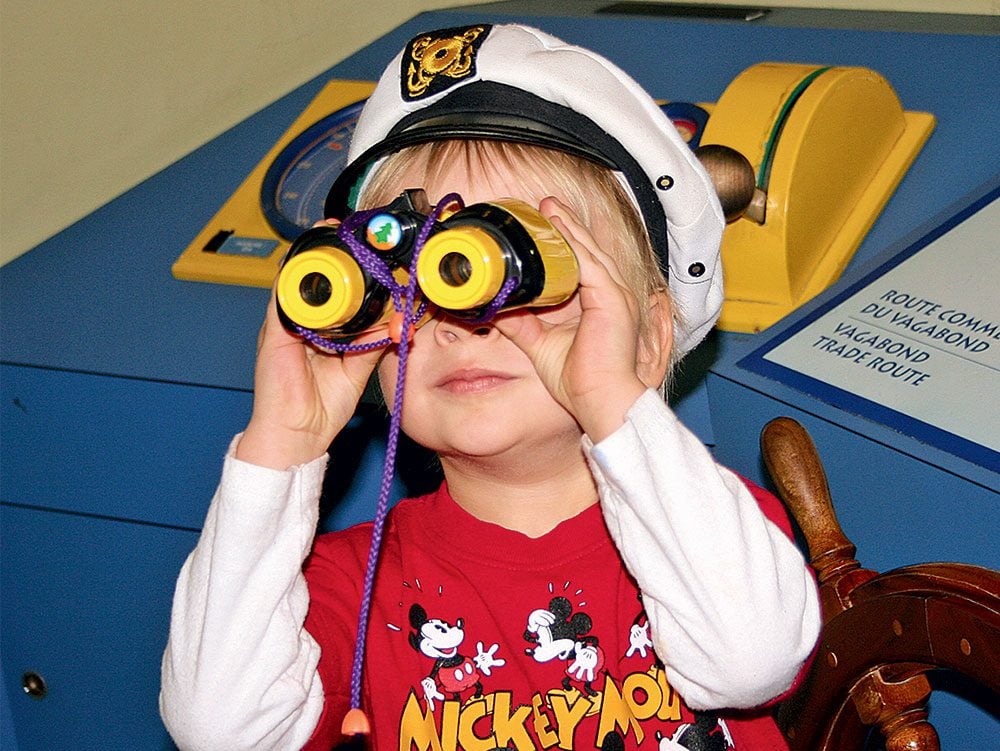
Got a catchy caption for this photo?
Judith Steffler of Osoyoos, British Columbia, shares this adorable pic, writing, “This is my grandson Lucas at the Children’s Museum in Ottawa—his binoculars were reversed!”
Share your funny one-liners for this photo in the comments section below or through Our Canada’s submissions site (please identify it as an entry for Caption Corner)!
Check out more Caption Corner challenges.
Don’t miss out-sign up for the Our Canada e-newsletter!
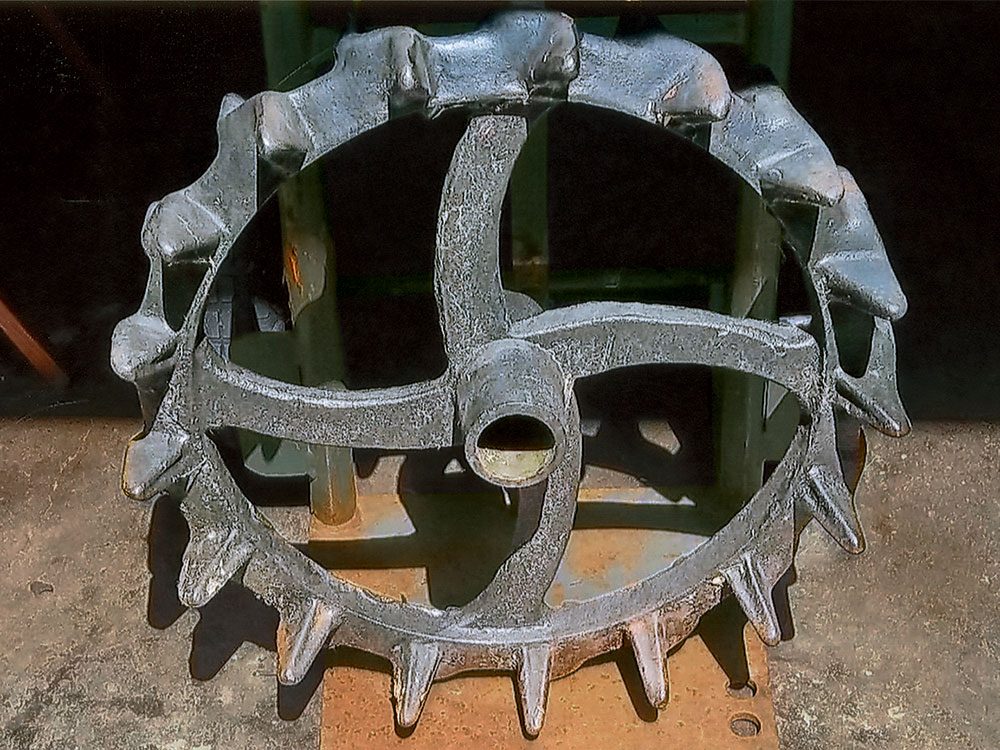
Mystery Object of the Month: What Is It?
Ashley Plaine of Petrolia, Ontario, writes, “My son bought a home in Sarnia, Ontario, and a couple of these objects were left behind by the owner. They each weigh 40 pounds and measure 19. 5 inches in height. I hope someone can tell us what they were used for.”
What do you think? Can you help solve this mystery?
Share your answers in the comments below or by sending them in through Our Canada’s submissions site (please identify it as an entry for “What Is It?”).
Challenge yourself to more “What Is It?” mysteries!
Don’t miss out on the best original Canadian photography—sign up for the Our Canada newsletter.